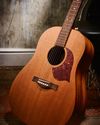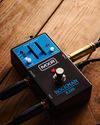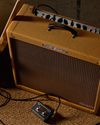
If plucking a ripe plum from a tree had a sound, it would resemble Carol Kaye's signature tone - a tone that made her a 'first-call' bassist in the highly competitive studio session world. It wasn't just that, though. Kaye is arguably the first bassist to exploit the instrument in a truly melodic fashion, a nod perhaps to her early days as a jazz guitar prodigy. Her ability to invent memorable and influential bass and guitar parts on the spot in a high-pressure situation took her to - and kept her at the very top of the studio scene and onto more than 10,000 recordings.
Carol Kaye was born into a musical family in Washington state on the Pacific Northwest in 1935, with both parents professional musicians. In 1942, they relocated to California and by the age of 13, she took possession of her first guitar. Incredibly, within a year she was proficient enough to take on students of her own alongside playing gigs in the local jazz clubs.
"I turned professional in 1948 after working with a fine jazz guitar teacher on the West Coast," Carol says. "Within a few months I'd learned enough to be out playing jazz gigs. Almost everyone in those days had a musical instrument. If you think of how many people today have cell phones and computers, that's how many people had instruments and how popular music was then. You heard real music everywhere: on the radio, TV and in the movies."
The Jazz Scene
In the 1950s Carol worked for the jazz saxophonist Teddy Edwards. While in his band, she came to the attention of producer Robert 'Bumps' Blackwell who is best remembered for producing and co-writing with Little Richard on a string of rock'n' roll classics such as Tutti Frutti, Long Tall Sally and Good Golly, Miss Molly.
Diese Geschichte stammt aus der August 2023-Ausgabe von Guitarist.
Starten Sie Ihre 7-tägige kostenlose Testversion von Magzter GOLD, um auf Tausende kuratierte Premium-Storys sowie über 8.000 Zeitschriften und Zeitungen zuzugreifen.
Bereits Abonnent ? Anmelden
Diese Geschichte stammt aus der August 2023-Ausgabe von Guitarist.
Starten Sie Ihre 7-tägige kostenlose Testversion von Magzter GOLD, um auf Tausende kuratierte Premium-Storys sowie über 8.000 Zeitschriften und Zeitungen zuzugreifen.
Bereits Abonnent? Anmelden

Best Recipes
Switching from chef to luthier might seem an almost unfathomable career changeover, but JWJ's Rich Jones insists that one work ethic really does flow into the other

Up To Speed
Alex Bishop is busy in the workshop crafting acoustic guitar necks - but can he keep up with his students?

Salves For Valves
Jamie Dickson checks in with tone-meister Dan Coggins who shares his tips on getting the best from your valve amp

ERIC JOHNSON
A NEW LIVE ALBUM FEATURING STEVE VAI, ERIC JOHNSON AND JOE SATRIANI DOCUMENTS A REUNION FOR THE MEMBERS OF THE ORIGINAL G3 TOUR THAT THUNDERED INTO THE WORLD BACK IN 1996. WE CHECK IN WITH ONE THIRD OF THE TRIUMVIRATE TO FIND OUT MORE

X Factor
J Rockett provides Bon Jovi guitar-slinger Phil X with a signature boost and overdrive pedal

WOMAN IN BLACK
Her surname precedes her (whether she likes it or not). But as Gibson releases a limited-edition recreation of her fabled father's SJ-200 – alongside her new J-185 - Rosanne Cash tells us she's comfortable in her skin and proud of her own legacy

Rocking On
MXR revives Tom Scholz's fabled 80s guitar headphone-amp tone in its latest pedal

Embellished Chords
Richard Barrett helps you explore more chordal opportunities in standard tuning

Vintage Modern
Fender attempts the incredible feat of replicating the historic Bassman with a silicon heart in its latest addition to the Tone Master series

QUEEN - BATTLE ROYAL
For 51 years, Queen's self-titled debut album was the cult curio of their fabled catalogue. Now, as the new Queen I boxset drags these lost songs into the daylight, Brian May tells us about poverty, parental disapproval, the Red Special's first run-out and the perils of playing through Jimi's stack